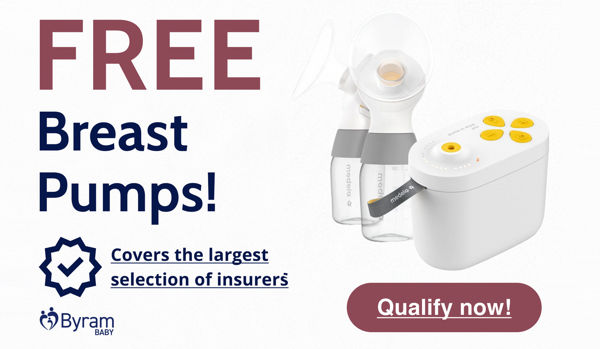Where we give birth, how we give birth, and whom we hire as care providers are very personal and essential choices during pregnancy. In this article, we will focus on the type of care providers available to birthing parents in most places around the globe. Every kind of care provider has different pros and cons, and parents must know this information to make the best decision for their family and their birth. It is also important for parents to know that they are hiring their care provider, which means they can choose a different care provider anytime during their pregnancy. Interviews, consultations, and research are encouraged when looking for the proper care provider for your birth.
We will focus on three types of care providers: OBGYNs, Certified Nurse Midwives (CNMs), and Certified Professional Midwives (CPM). We will discuss each care provider's general training and scope of practice, where they practice, and how their care most commonly looks. For the sake of this article, we will be generalizing how most care providers in these professions practice, but it is important to note that not all OBGYNs, CPM, or CNMs practice the same, which is why interviews and consultations come in handy.
Obstetrics and Gynecology (OBGYN)
An OBGYN is a trained surgeon and doctor specializing in childbirth and women's health. They are well-trained and prepared for high-risk pregnancy and birth scenarios. It is common for OBGYNs to practice in the hospital setting, although some OBGYNs practice community birth in home and birth center settings. With less than two percent of births in the United States being out of the hospital, OBGYNs are the most commonly used care providers.
OBGYN prenatal appointments are generally between fifteen and thirty minutes. If your OBGYN practices in a group practice, you will ideally meet with each OBGYN during prenatal appointments, so that you don't have a stranger attending your birth. Most commonly, OBGYNs will arrive at the end of your labor to assist with pushing and delivering the baby. If there is a need for a surgical birth, they will be the care provider who performs the surgery. They will also provide their services if stitches or medications are needed immediately postpartum.
Whether you're looking for baby gear or self-care essentials, we've got you covered!
OBGYN care providers do not often see the entire labor as they usually attend quite a few births for every shift. Because of this, your nursing staff during your labor is almost as crucial as your OBGYN. OBGYNs are also ruled by hospital policies and procedures and have specific guidelines they must follow in order to keep their privileges and stay licensed. In hospital settings with OBGYN care providers, birth parents are more likely to experience interventions, like inductions, epidurals, internal exams, instrumental births, and cesarean sections.
The benefit of having an OBGYN would be when the pregnancy or birth becomes high risk. In these scenarios, OBGYNs are the best care providers to have. OBGYNs are trained in surgical delivery and in treating high-risk patients.
The other two care providers are Certified Nurse Midwives (CNM) and Certified Professional Midwives (CPM). There is quite a difference in each of these care providers, and it is important to note the differences because they will change the type of care you receive.
Certified Nurse Midwives (CNM)
CNMs first attend nursing school and become registered nurses. They can then take the American Midwifery Certification Board Nurse-Midwifery Examination and apply for licensure. It is common for CNMs to work in hospital settings and birth centers attached to the hospitals, but some CNMs work in the community birth setting of home births and private birthing centers. CNMs are a great in-between for someone who doesn't want to give birth out of the hospital but also does not want an OBGYN care provider.
It is important to note that if a CNM is working at a hospital or birth center attached to the hospital, they are also required to follow hospital policies and procedures like that of OBGYNs. Unlike OBGYNs, CNM care providers cannot perform surgeries and are not trained for high-risk birth scenarios. The benefit of a CNM who practices in hospital settings is that they usually work directly with OBGYNs, so if something comes up and birth goes from low-risk to high-risk, the transition is generally swift and smooth. CNM care provider's appointments can range from fifteen minutes to an hour, depending on how the midwife practices.
Just like OBGYN, if the CNM practices in a group, you will likely meet every care provider in their group practice so that the parents are familiar with whoever is on call when they go into labor. There is still a risk of more interventions by giving birth in a hospital setting. Still, it is more common for CNM-attended deliveries to have fewer interventions than OBGYN-attended births. CNMs often attend more of the labor than an OBGYN does, but it depends on how busy their shift is and how many other births they are attending simultaneously. In states where CNMs have different privileges than CPMs, they will sometimes work together to provide a more extensive scope of care for community births.
Certified Professional Midwives (CPM)
CPMs only practice in community birth settings that look like home births and private birth centers. These midwives can be trained through MEAC-accredited schools or the Portfolio Evaluation Process (PEP). No matter how a student goes about getting trained, they must work with trained midwives to acquire a specific skill set, attend a specific number of births in three different phases, and finally sit for the NARM exam and become licensed. CNM midwives are professionals in physiological low-risk childbirth.
Midwifery appointments are usually between thirty minutes and an hour, and some CPMs run their prenatal and postpartum appointments in the client's home.
These are not the care providers for people with high risks, and although the increased risk is defined differently depending on laws in different states and countries, a good CPM can tell a parent if they are at low enough risk for community birth. Some studies show that planned home births are just as safe for low-risk birthing parents as hospital births; therefore, the risks of interventions are much lower in the care of a CPM.
The lower number of interventions, such as epidurals and pharmaceutical inductions, could be because they do not have access to some of them. Another reason is that CPMs usually support birthing parents from active labor until three to four hours postpartum, or more. This support allows CPMs to be more acutely aware of what birthing parents need, seeing the whole picture and applying various techniques for providing pain relief.
Although CPMs practice out of the hospital, depending on the laws in the area, most CPMs can carry oxygen, antihemorrhagic medications, IV fluids, antibiotics, suturing, and resuscitation tools.
The downside to CPM care is that if an emergency occurs, that is out of their scope of practice, a transfer must happen. In addition, how far a birthing center or home is from the hospital can affect outcomes. Like CNMs, CPMs cannot perform surgeries, and cesarean sections also must be transferred to an OBGYN.
Just like OBGYNs and CNMs, CPMs are legally only allowed to practice within specific parameters to keep their licensure. Most commonly, CPMs work in a solo practice or small group practice. Because of this, you are much more likely to be well-acquainted with the midwife who attends your birth.
Each care provider plays an essential role in childbirth; no one type of care provider is perfect for every parent. Learning about each type of care provider available to you in your area is the first step in finding prenatal, birth, and postpartum care that best aligns with your values. Interviews and an honest self-history will allow these providers to let you know if they can legally and safely care for you and, if not, to whom they would refer you. Throughout finding your care provider, remember that you are in control and the ultimate professional of your body, and your experiences.








